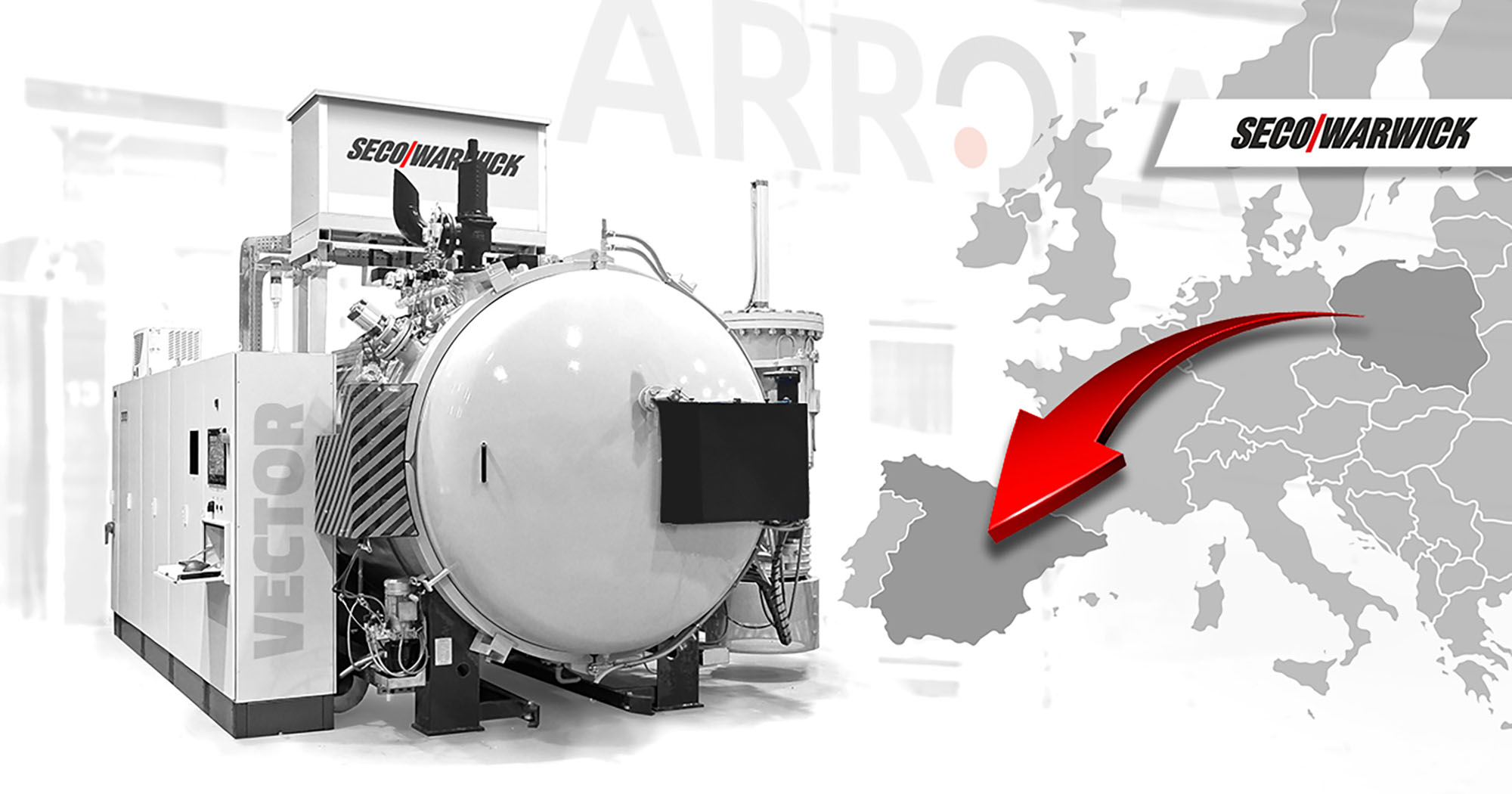One of the largest service hardening plants in Spain has purchased a Vector® vacuum furnace from SECO/WARWICK. It will be the third SECO/WARWICK solution for this Partner.
SECO/WARWICK local service
Local service is one of the reasons why SECO/WARWICK is the partner’s first choice. SECO/WARWICK has always thought globally and acted locally. On the Iberian Peninsula, customer service is provided by Arrola, and this local support is praised by this service hardening plant, a long time SECO/WARWICK customer.
“We are happy to have a local partner who knows our furnaces very well and is close to our customers. Arrola understands customer expectations and has been providing comprehensive services to our partners for years. It is a very good and convenient system that works efficiently. Thanks to local support, we can propose a comprehensive offer including fast support,” says Maciej Korecki, Vice President of the Vacuum Segment, of the SECO/WARWICK Group.
One Vacuum furnace for many processes
The furnace on order will increase the company’s efficiency when hardening larger dimensions elements. The solution will join the machine park in which there is already one Vector vacuum furnace, and a two-chamber furnace with an oil quench manufactured by SECO/WARWICK.
“The Vector will enhance and increase the hardening processing capacity and will improve process efficiency. The advantage of this product is a large working space (900x900x1200) with the capacity to adjust to an oversized load, utilizing the advantages of a circular heating chamber. This is the golden measure for many service hardening plants,” commented M.Korecki.
Service hardening plants choose SECO/WARWICK and Vector
The vacuum furnace ordered by the hardening plant enables efficient processes to be carried out under vacuum, in both medium and high ranges. This is possible thanks to a system consisting of a dry mechanical pump, efficient Roots pump, and a diffusion pump. The process efficiency is also influenced by utilizing the option for cooling at 15 bar. Moreover, due to the inverter control, it is possible to precisely control the cooling rate. Thanks to the use of an inverter to control the gas blower, there are no electrical network overloads associated with starting the engine, and the energy efficiency is improved. Thus, the customer avoids increased charges related to electricity. The Vector on order is adapted to the aviation standard and will also perform production for this demanding industry.
Other great advantages of the furnace include low heat losses and good temperature distribution in the heating chamber, equally resistant to rapid wear. The vacuum furnace will be equipped with numerous options such as convection, directional cooling, and isothermal quenching.

Service hardening plants are specialists in metal heat treatment, and a very demanding group of clients. SECO/WARWICK furnaces are at work every day in leading European and American hardening plants.
Vacuum as an eco furnace’s atmosphere
Vacuum furnaces use vacuum (vacuum created by air evacuation) as the protective atmosphere for the heat treated part surfaces. The vacuum furnace’s main advantage is their versatility and the ability to carry out processes traditionally carried out in atmospheric furnaces. Differences in the vacuum furnace construction as well as the method of conducting the processes minimizes both media consumption and emissions to the environment, making the vacuum furnace itself a SECO/ECO solution when compared to traditional atmosphere furnaces.
Vacuum heat treatment’s eco-friendly features include:
- perfect part surface quality (without additional operations),
- no intercrystalline oxidation (no additional mechanical treatment),
- no need to use protective gases (lower costs and emissions) ,
- minimal consumption of process gases (cost savings),
- minimum time for atmosphere preparation and conditioning (saving time and costs),
- zero startup and shutdown time, work on demand (saving time, costs),
- no open flame, no risk of fire or explosion (safety),
- clean process, no part washing required (reduced environmental pollution),
- low heat and by-product emissions (limited global warming effect),
- environmentally friendly (zero pollution),
- zero CO2 emissions (carbon footprint reduction).

